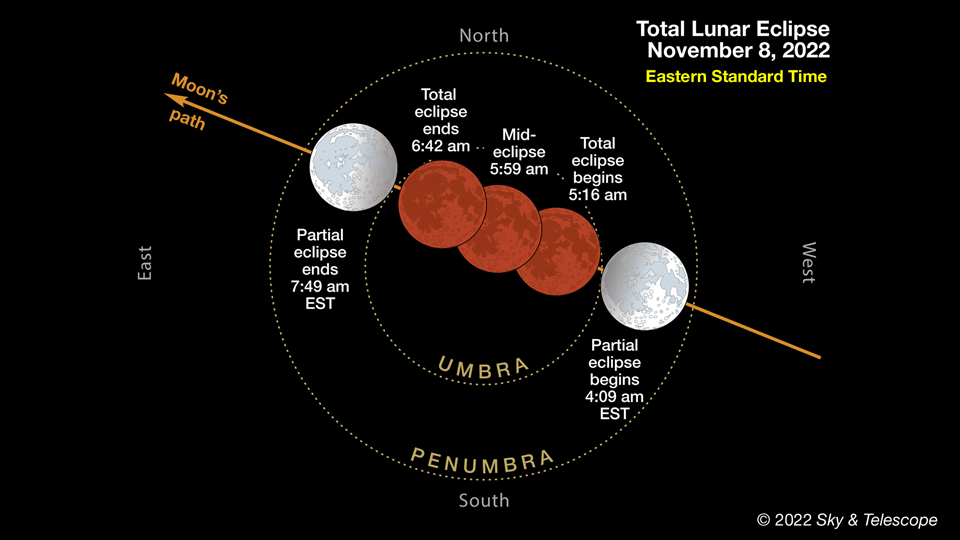Before the polls open on Election Day, the curvy outline of Earth will creep across the surface of the moon during a total lunar eclipse.
The moon is about as distant as it gets from Earth right now, so totality will last nearly 90 minutes, from 4:16 a.m. to 5:42 a.m. CST on Tuesday morning. Including the partial coverage, the eclipse will begin at 3:09 a.m. and end at 6:49 a.m.
The moon circles Earth every 30 days, and it aligns with the planet and the sun as much as three times per year, though not always with perfect geometry. The next total lunar eclipse visible on Earth will happen on March 14, 2025 – and this duration of totality won’t be exceeded until a 102-minute totality in 2029.

During a total lunar eclipse, the entire moon is within the darkest part of Earth’s shadow. The hue will appear reddish thanks to sunlight refracted by the atmosphere of Earth, but the exact color is unknown as each eclipse viewing is unique.
The brightness and hue of eclipses are affected by clouds along Earth’s limb, or the edge of the atmosphere, and the amount of atmospheric dust and aerosols. When the moon enters and exits its reddish totality, viewers can look for a sliver of pale blue, which would represent Earth’s red-absorbing ozone layer.
“It’s not every day that you get to directly experience this astronomical scale movement of things … right in front of your eyes,” Keivan Stassun, a Vanderbilt University astronomer, said of lunar eclipses last year.
Lunar eclipses, unlike many celestial events, can be viewed within the light pollution of urban centers. But observers in a remote locale can better experience the stars and the Milky Way galaxy during the transition from light to dark.



